Flipping a dot isn’t too hard, but how do you proceed when you have to control hundreds of them ?
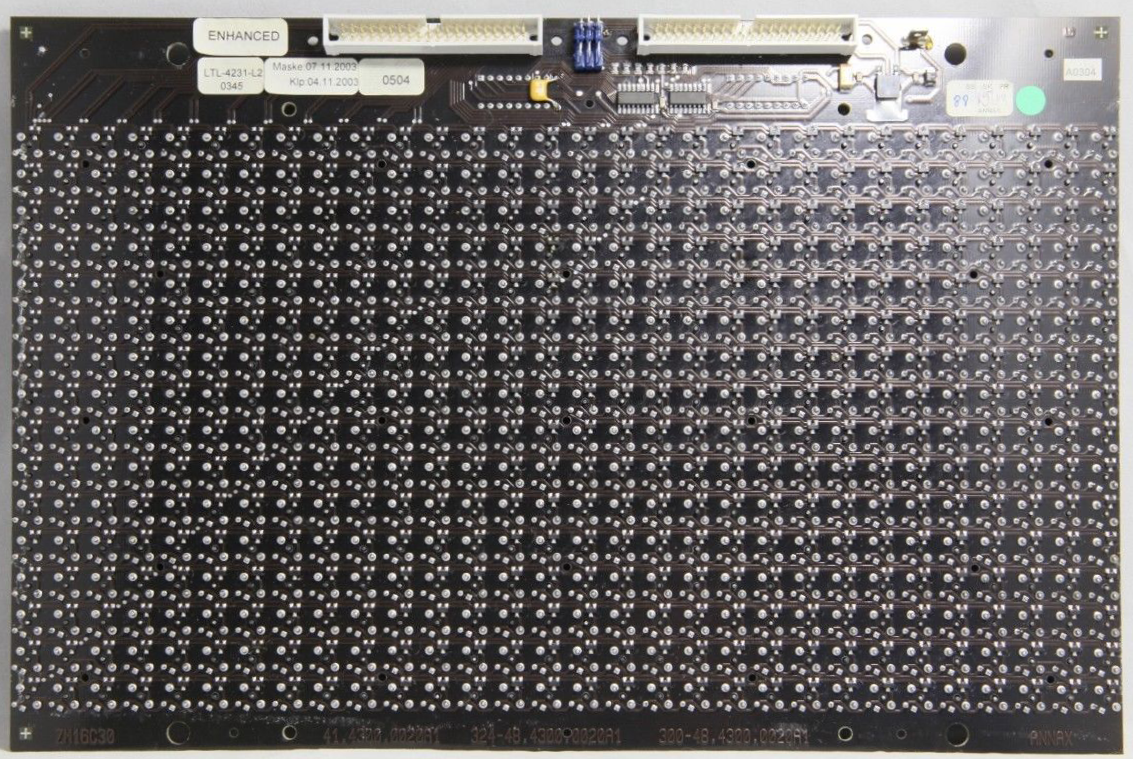
If you look at the picture below (sorry for the poor quality, I can’t take pictures of it myself as I haven’t received the displays yet), you can see the display's back board. I extracted a 3x3 dots area.
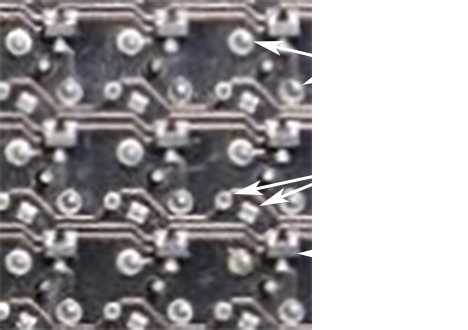
You may be able to distinguish the connections. Below is a drawing of it to make it clearer (I omitted the part associated with the LEDs). Also the columns connections are not visible on the picture as it seems they are on the other side of the PCB.
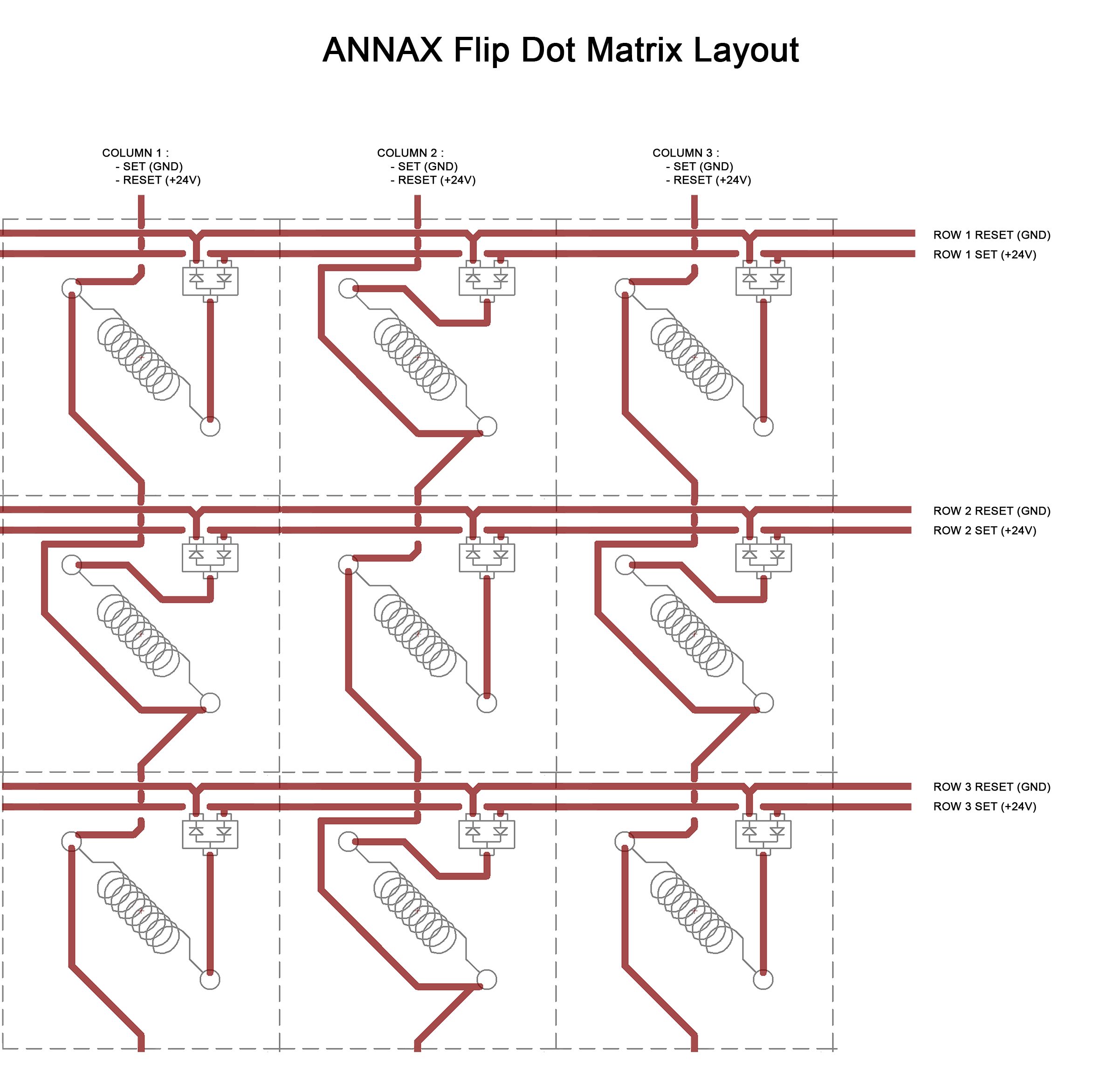
Below is an equivalent schematic, but clearer and easier to work with :
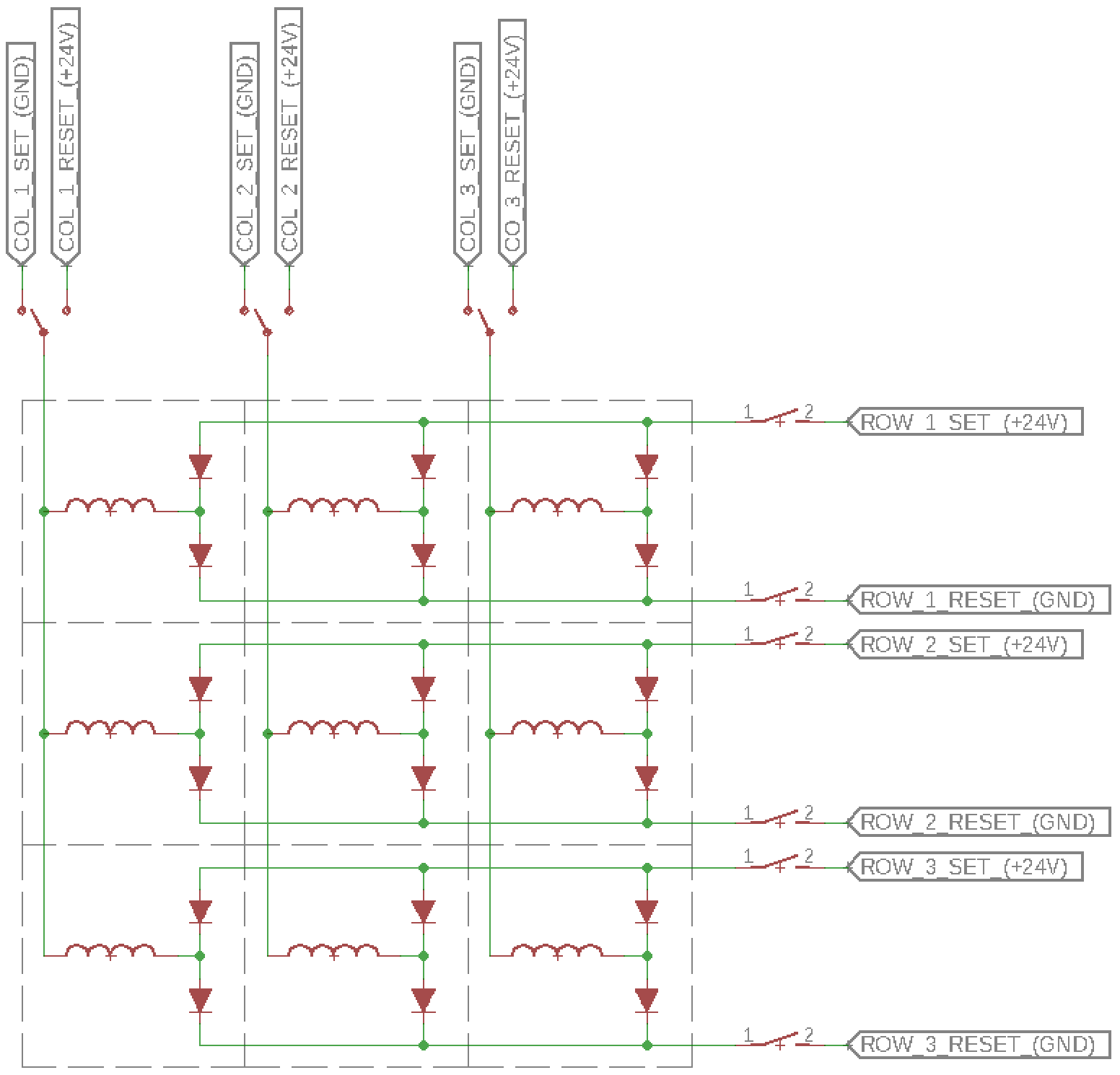
From now on we’ll stick with this schematic and look at the theory of flipping dots in such an assembly.
Each column can either be connected to GND or to +24V (respectively SET and RESET the dot).
Each row has two separate inputs, +24V to SET the dot, and GND to RESET the dot.
Let’s consider a blank (black) display and we want to flip the upper left dot (column 1, row 1). We should connect ROW_1_SET to 24V, COL_1_SET to GND, send a pulse of 24V, and open the switches again. Current can only flow through the first dot, as it is blocked by the dual diodes (those are required otherwise the current will be free to flow through every other coils) and open switches elsewhere.

To UNSET it, we have to reverse the direction of the pulse through the coil. So we connect the column to +24V and the row to GND.
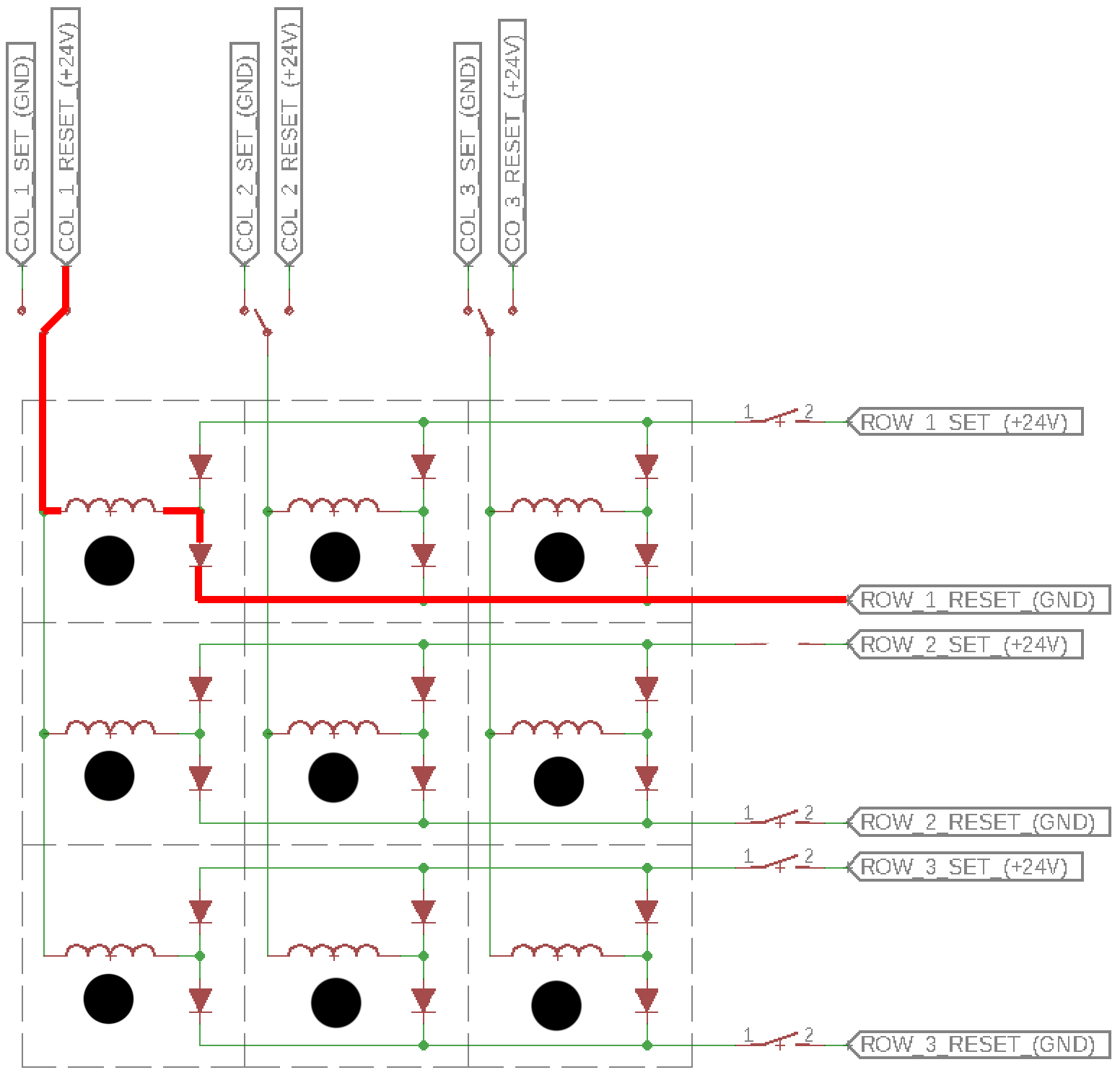
To flip several dots at the same time, for example (column 1, row 2) and (column 2, row 2), we can connect COL_1_SET and COL_2_SET to GND simultaneously, and send a pulse through ROW_2_SET.
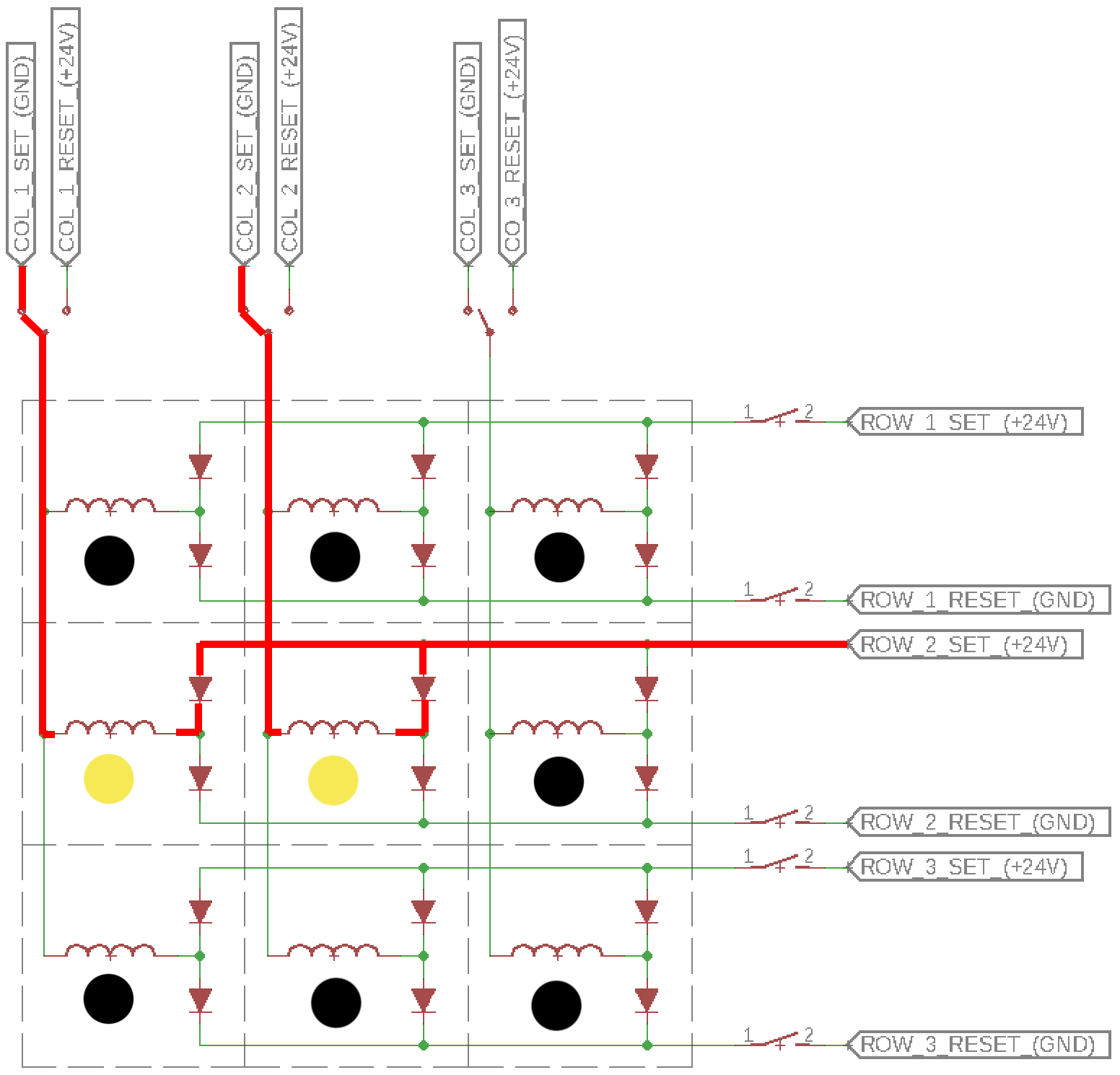
Note that NOT ALL combination of 2 or more dots can be set at the same time. We cannot simultaneously set dots that don't share the same column or same row without affecting other dots on the board. Below an example of trying to set (col 2, row 1) and (col 3, row 2).
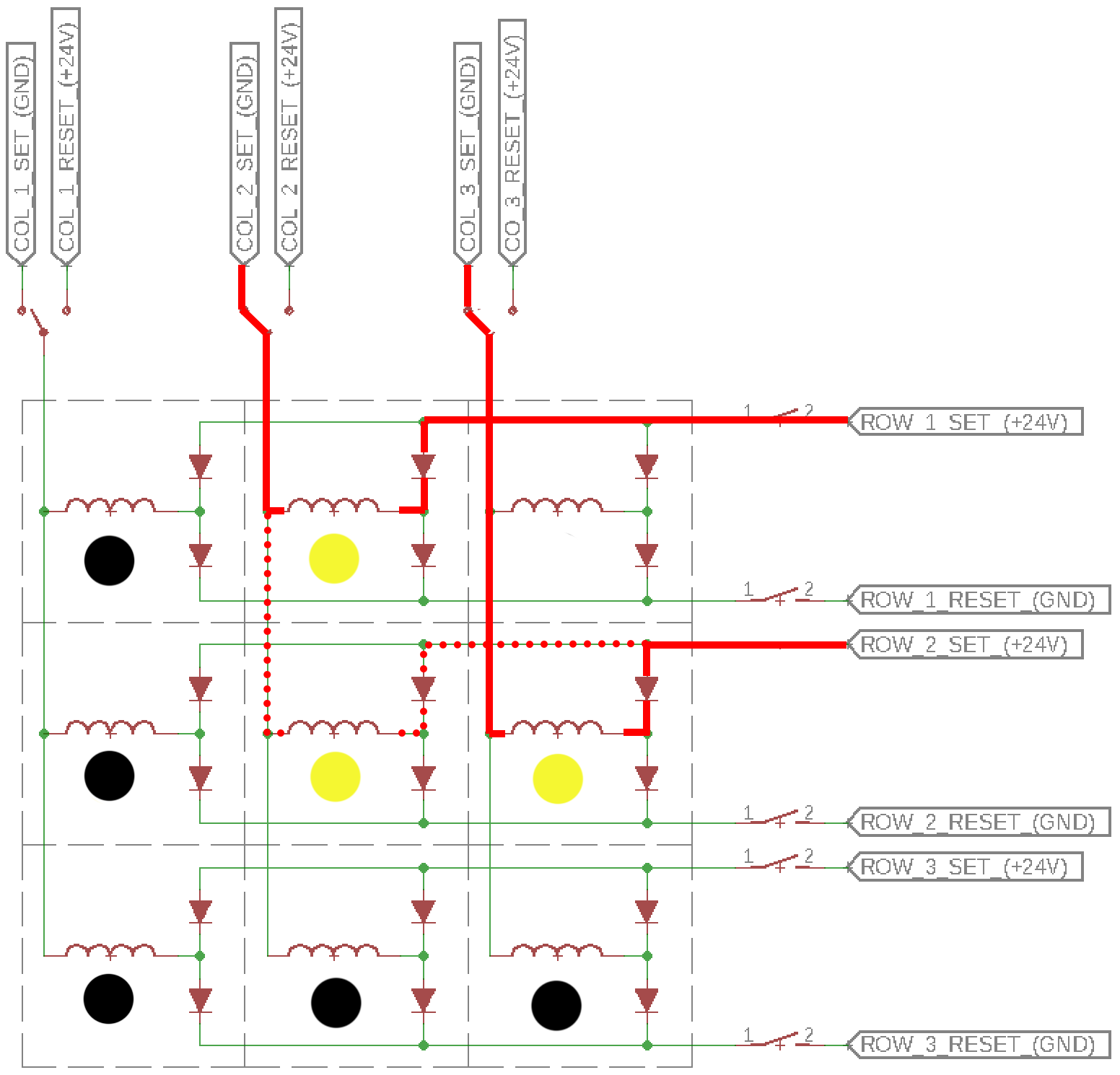
You can see that the middle dot (col 2, row 2) will have current flowing through it and will be SET even if we were not targeting it in the first place.
It's obvious that a mishandling of the switches may easily create shorts and turn the flip-dot in a smoke generator, eg. by closing ROW_X_SET and ROW_X_RESET at the same time.
We established how to flip each dot of the display by a careful combination of connections on each row and column. Moving those switches will be the job of the controller which will be commanded by the code (driver) on the ESP32.

 Frederic L
Frederic L
Discussions
Become a Hackaday.io Member
Create an account to leave a comment. Already have an account? Log In.
From my little experience :
* You select/set one column to 0V
* for each rown you send a short pulse, either -12V or +12V
So your method might not be the most appropriate or efficient. Even if it works :-D
Are you sure? yes | no